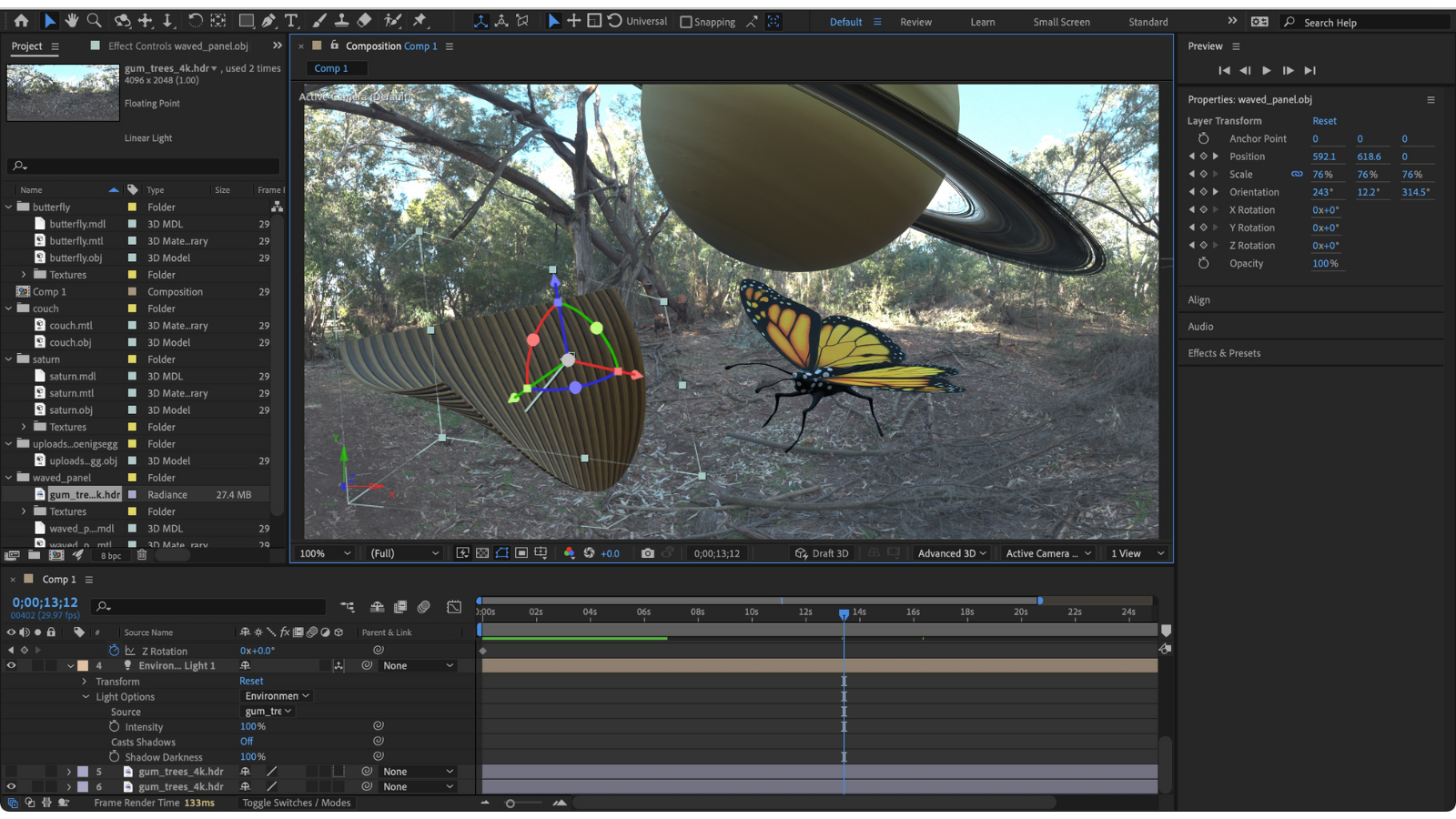
Adobe After Effects is to video effects what Photoshop is to image editing. That should come as no surprise, with Adobe dominating the creative apps field with the likes of Photoshop, Illustrator, InDesign, and After Effects itself. It’s long been our choice for best VFX software, and not just because seamlessly integrating with other Creative Apps
The last time we reviewed the software, we called it a visual effects powerhouse that anyone can use. It’s impressively feature-rich, packed with industry-standard visual effects tools for professionals and beginners - although newcomers may find it a bit trickier at first. However, in a bid to make it even more accessible, Adobe has been busy adding a whole load of additional tools beyond the VFX essentials every video compositor needs.
So, we were excited to see what 2024 version serves up. Do the latest AI features and improvements make special effects more accessible? And is Adobe After Effects still worth it for your next VFX project?
Adobe After Effects: Pricing & plans
- Expensive on its own, but a bargain if you use other Adobe Creative Cloud apps.
It should no longer be a surprise by now that all of Adobe’s professional line of software is only available through a subscription, although you do have a choice of how much you need (or want) to pay to gain access to it.
Adobe offers three subscription plans: annual, monthly, and annual billed monthly. This last one is like a phone contract, you sign up for a year and pay an early exit fee if you stop the subscription. You’ll also find different rates, depending on whether you’re an individual user, business, or student and teacher.
After Effects is available as a standalone app - if you’re only interested in VFX, this is the best choice. However, it’s also bundled into the Adobe Creative Cloud All Apps alongside the likes of Photoshop and Premiere Pro (in our experience, the best video editing software, and a perfect complement to After Effects). It also includes 100GB of cloud storage, access to Adobe Express and Adobe Firefly, along with tutorials, fonts, and 500 generative credits per month for AI-created media.
If you’d like to try it out before purchasing it, Adobe offers you a 7-day free trial - just make sure to cancel before your time is up should you decide After Effects isn’t for you, otherwise you’ll be automatically subscribed.
- Pricing & plans: 4/5
Adobe After Effects: 3D
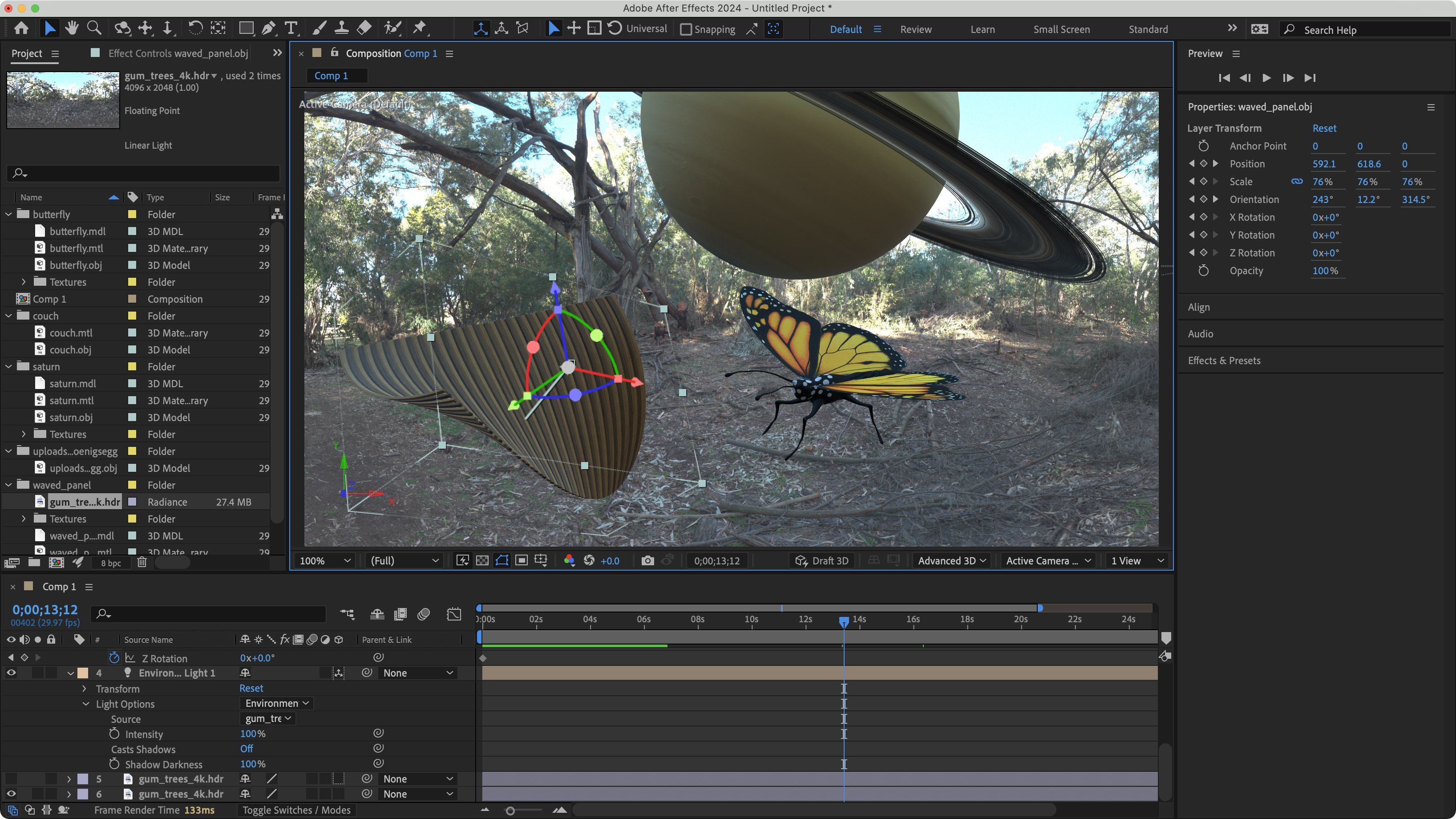
- Great new working environment, with a good selection of tools which are surprisingly easy to use.
After Effects has also boasted outstanding tools for visual effects - and we’ve always been impressed with their implementation. But, for us, the big tentpole feature is undoubtedly 3D.
This isn’t Adobe Substance or any of the rest of the best 3D modeling software. So, you can’t model tools directly in After Effects. But you can easily import .obj, .gltf, and .glb objects which you’ll be able to manipulate within the software. You will find some limitations, like the fact transparent materials aren’t yet supported, but it’s pretty remarkable being able to easily work with 3D objects right from the interface we’ve grown accustomed to. If you don’t have a 3D object to play with yourself, Adobe’s own stock library has a wealth of them, many of which are free to license and use.
Perhaps one of the most exciting features is Image-Based lighting. It uses a 360-degree High Dynamic Range file as a light source to realistically create complementary shadows as your object moves around its environment, while also altering its colors so they blend more realistically with the scene you’ve created. In our experiments, it worked astonishingly well, and it’s incredibly easy to blend 3D objects within a 2D project.
- 3D: 4/5
Adobe After Effects: Roto Brush 2
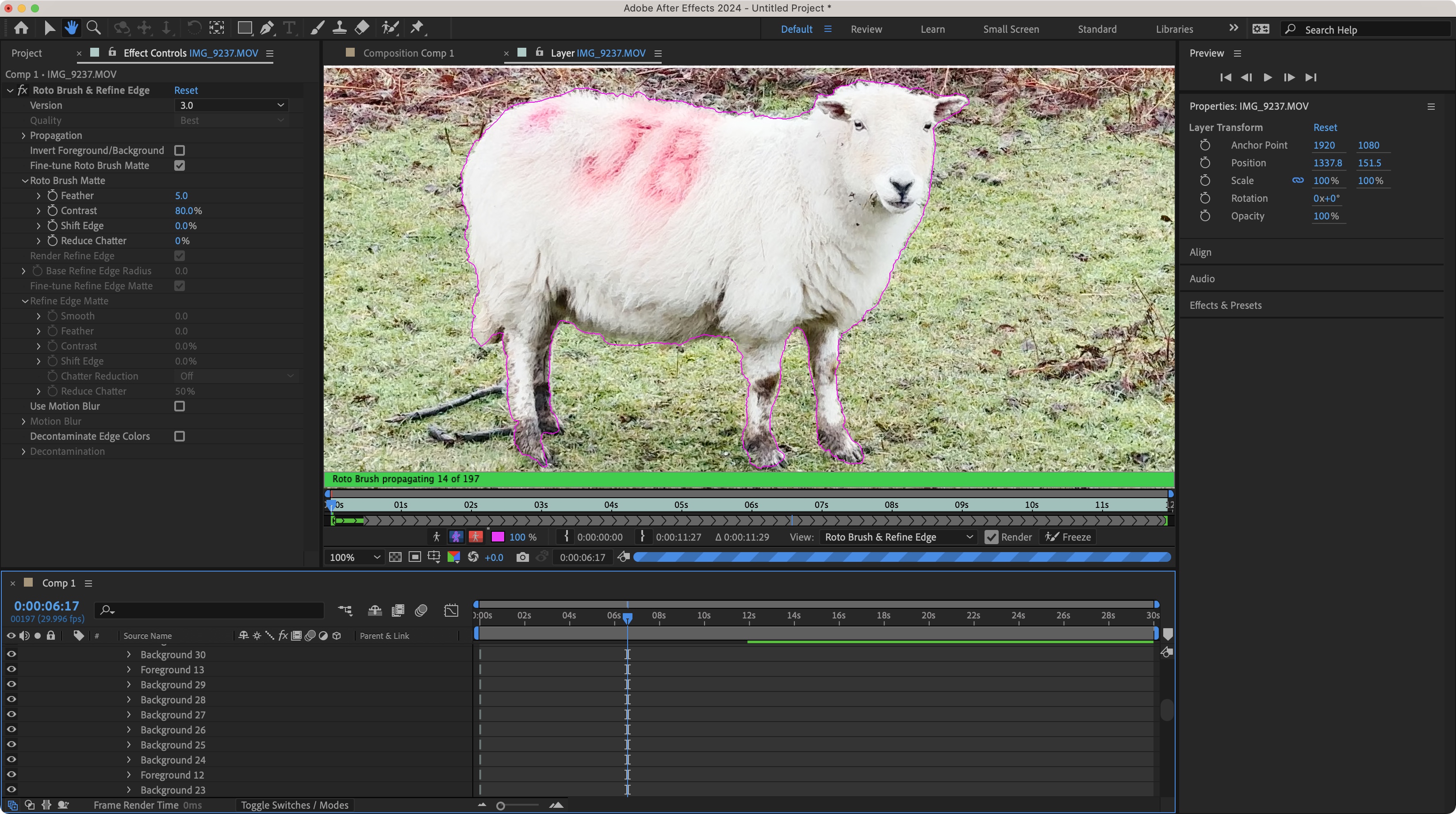
- The AI makes it easy to select your object, and the auto tracking does an excellent job following its movement over time.
Rotoscoping is an invaluable tool. Sure, you could use a green screen to make the process so much easier and faster, but sometimes you don’t have that luxury, so you end up having to cut out a subject from a potentially complex background. This used to be done on a frame by frame basis, which is where Adobe After Effects’ Roto Brush 2 comes into its own.
This tool uses machine learning algorithms to greatly simplify and speed up the process. You still have to define the object you wish to preserve, and fine tune the selection until you’re happy with the results - there’s no need to be pixel accurate as the interface will help fill the gaps as it were.
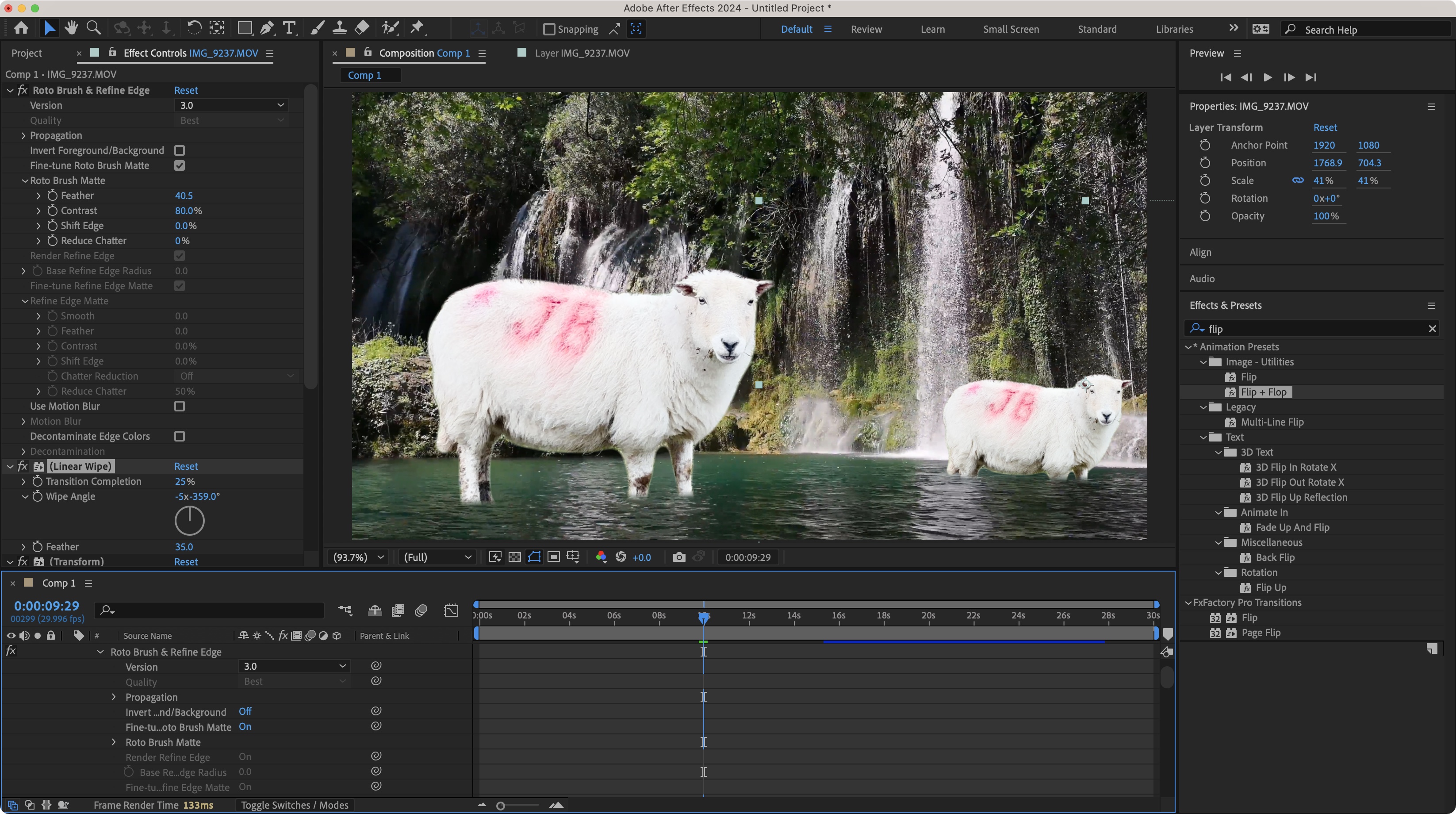
Once you’re happy with your selection, this tool will automatically analyze the rest of the clip, tracking the movement of your selection frame by frame.
Our test subject, a sheep, was a pretty tricky one, but Roto Brush 2 handled it exceedingly well. Suffice to say, we were impressed by the results and hardly had to do any fixing over the clip’s duration.
- Roto Brush 2: 4.5/5
Adobe After Effects 2024: Content-Aware Fill
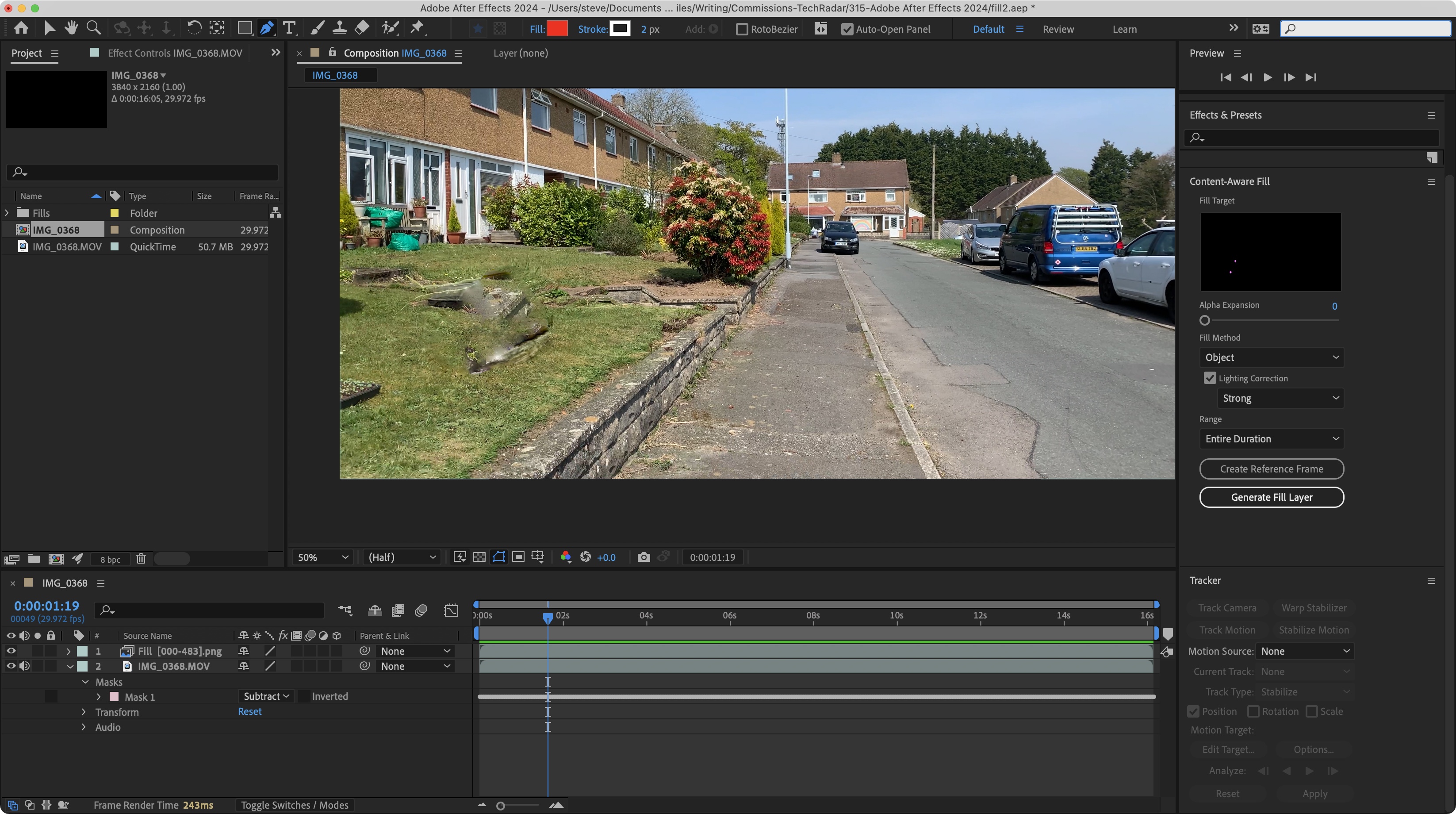
- It’s a great idea that likely works best when the background isn’t too busy.
Content-Aware Fill sounds immensely useful. How many times have you looked at a clip that would’ve been perfect, were it not for that person in the background, or that piece of trash you regretfully failed to notice when you were shooting?
With this tool, you can use Adobe’s Sensei AI to erase said item from your video, blending the hole left behind with the background. The examples they show make it look like magic, and perhaps it is in certain conditions, as is the case with other “image repair”-like tools: it all depends on the scene, and how complex the removed section is to replace.
Selecting the offending object is simple enough: create a mask around it, track it over time, and then use this Content-Aware tool to ‘Generate a Fill Layer’. So far, so good. We found the time it took to do its magic was exceedingly long. We thought the Roto Brush 2 was slow on our 2.3GHz 8-core Intel Core i9 Mac, but that was nothing compared to this one, and sadly, by the end, our results were disappointing.
However, it’s highly likely we demanded too much of this tool with either too busy a background in one case, or too small a subject in another. However, the results do show what the software was trying to do: if your background is relatively clean, you should get pretty good results out of it.
- Content-Aware Fill: 3.5/5
Adobe After Effects 2024: Improved Interface
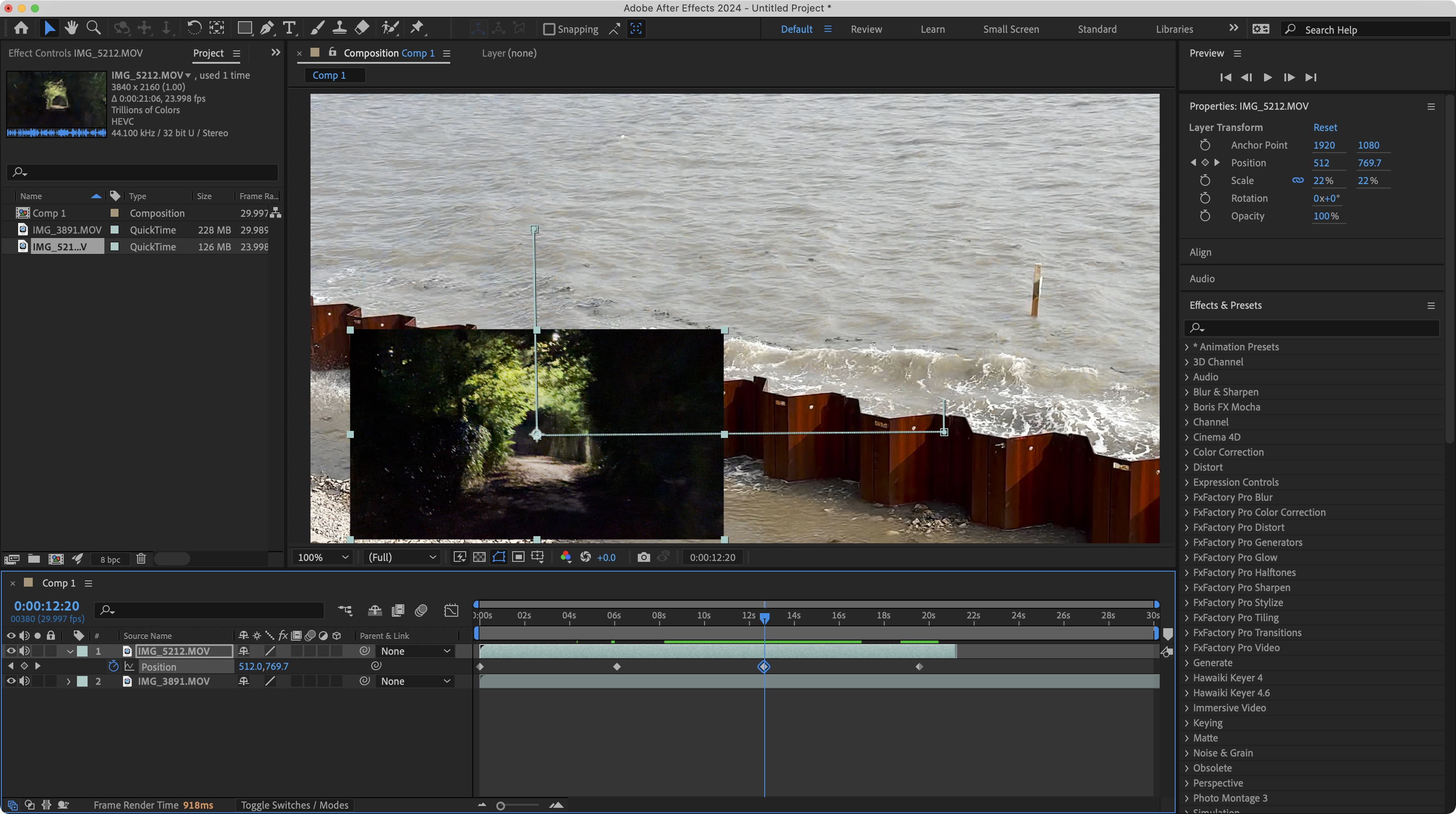
- It’s not all tentpole features: other parts of the interface have received some welcome improvements.
On top of the above there have been a few other interesting improvements, namely with the Properties Panel which has been designed to simplify the animation process: it’s now ridiculously easy to add keyframes to core values and move a clip across the screen, alter its size, opacity and rotation. As you create a keyframe in the Properties Panel, you’ll also see them appear in the Timeline, enabling you to make alterations wherever you see fit.
Other improvements include multi-frame rendering which is designed to speed up the rendering process, by up to a factor of 4, depending of course on your computer’s specs.
Adobe After Effects: Final Verdict
All in all, Adobe After Effects 2024 introduces a few powerful new tools, the most exciting of which - for us - is the inclusion of an easy-to-use 3D working environment. Dedicated 3D software is still the place to go if you’re serious about that kind of work, but it’s fantastic, even with some limitations, to also be able to have access to it straight from After Effects. Whether you’re a professional VFX artist or just beginning your career, Adobe After Effects is still the best place to start.
Adobe After Effects: Scorecard
Should I buy?

Buy it if...
You’re a creative at any level who a professional VFX software toolkit, you enjoy the Adobe environment, and you look forward to all the new tools Adobe introduces each year.
Don't buy it if...
Your needs are more modest or you're a beginner who may be easily overwhelmed by the software’s complexity - which is inevitable considering all you can achieve with After Effects.
Adobe After Effects: Alternatives
We've tested out a range of the best Adobe After Effects alternatives - and whether you need more than AE offers, you want something simpler, or you want free VFX software, there are loads out there.
For a free, professional, check out Fusion by Blackmagic Design, which works alongside DaVinci Resolve. We also like Apple Motion, a VFX tool that pairs nicely with Apple Final Cut Pro.
We tested the best video editing apps- and here are our top picks







